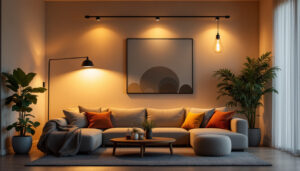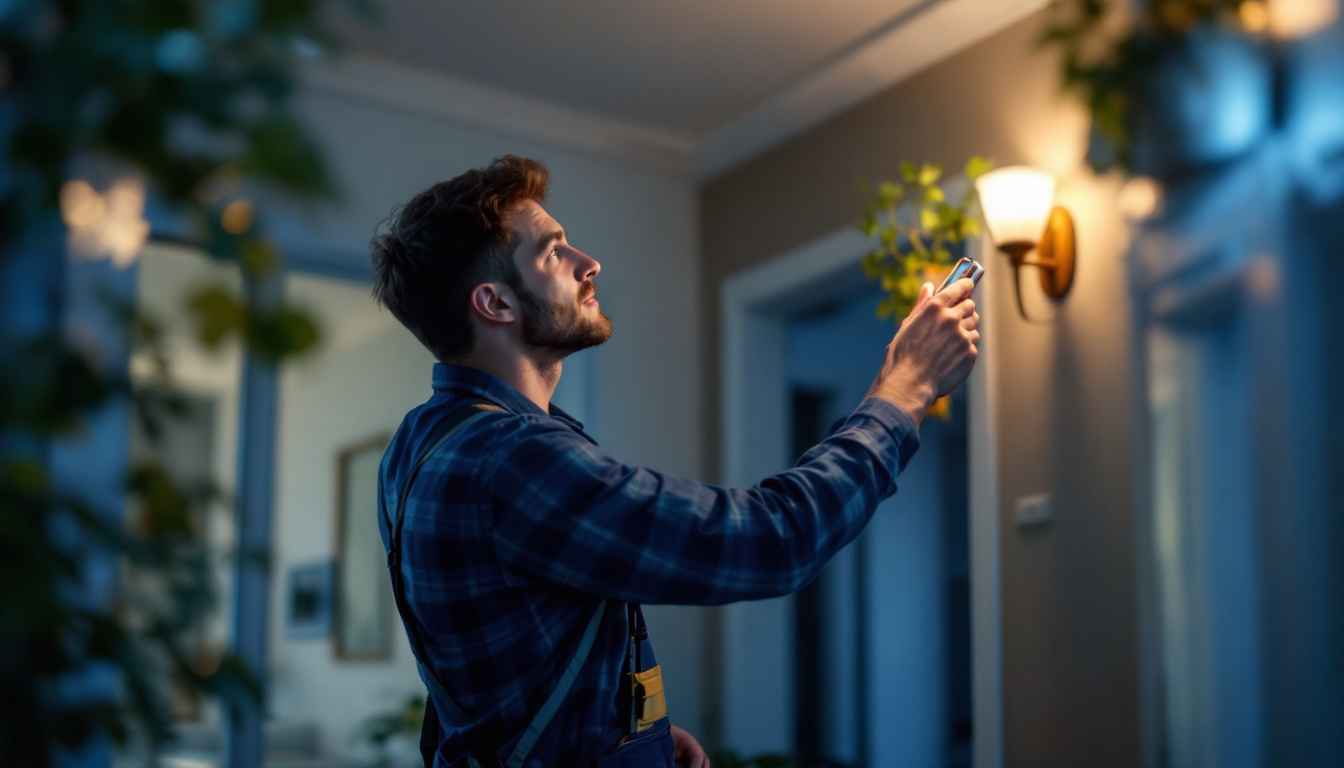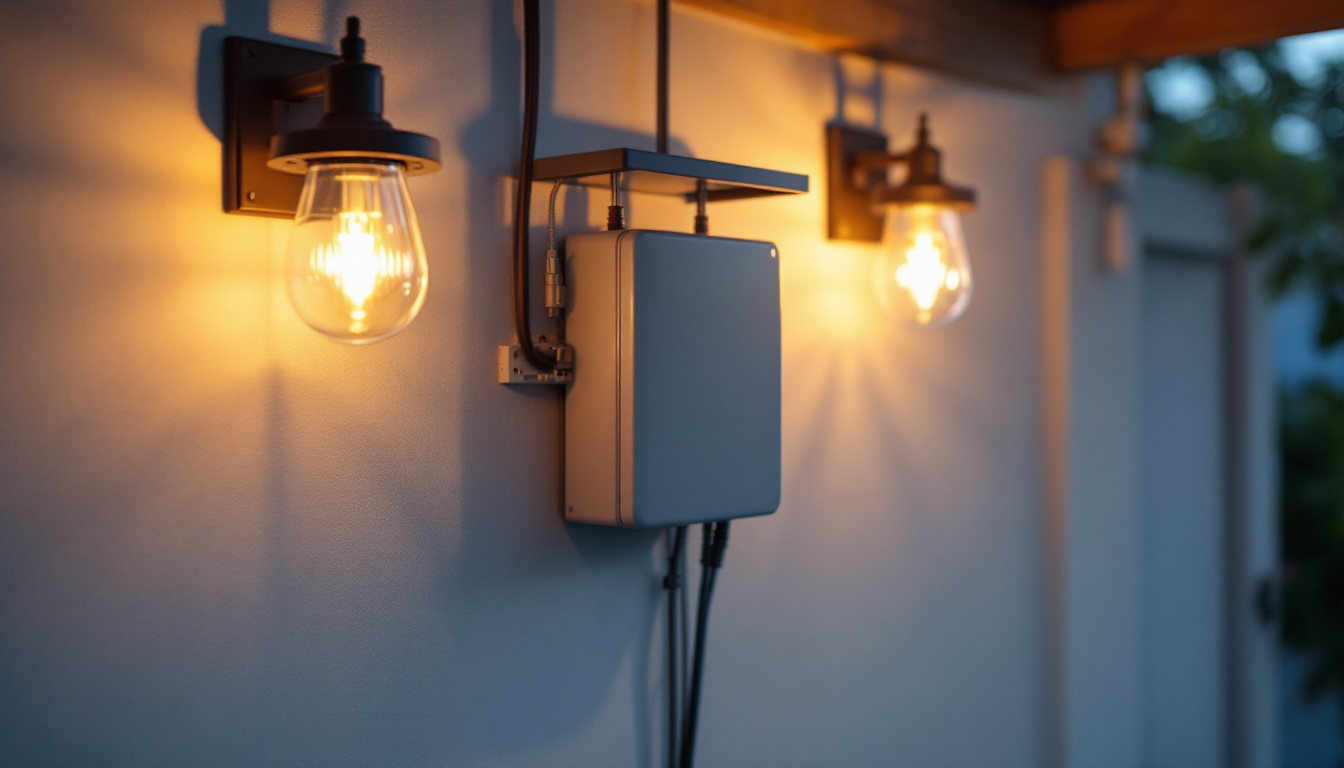

In the ever-evolving world of lighting technology, LED light bulbs have emerged as a game-changer. Their energy efficiency, longevity, and versatility make them a top choice for both residential and commercial applications. For lighting contractors looking to provide the best solutions to their clients, understanding the nuances of LED technology is essential. This article offers quick tips to help lighting contractors choose the brightest LED light bulbs and optimize their installations.
Before diving into specific products, it’s crucial to comprehend the fundamentals of LED technology. Light Emitting Diodes (LEDs) operate differently than traditional incandescent or fluorescent bulbs. They convert electricity directly into light, resulting in greater efficiency and reduced heat generation. This unique mechanism not only contributes to their longevity—often lasting up to 25,000 hours or more—but also minimizes the need for frequent replacements, which can be a significant cost-saving factor over time.
One of the most significant advantages of LED bulbs is their efficiency. Measured in lumens per watt (lm/W), this rating indicates how much light a bulb produces for each watt of electricity consumed. For contractors, selecting bulbs with a high lm/W rating is essential for maximizing energy savings while providing ample illumination. In fact, many LED options can produce the same amount of light as traditional bulbs while using only a fraction of the energy, making them a smart choice for both residential and commercial applications. Additionally, the longer lifespan of LEDs means that they contribute to reduced waste, aligning with sustainable building practices that are increasingly important in today’s market.
color temperature, measured in Kelvins (K), plays a vital role in the ambiance of a space. Warmer temperatures (2700K-3000K) create a cozy atmosphere, suitable for residential settings, while cooler temperatures (4000K-5000K) are ideal for commercial environments where clarity and focus are paramount. Understanding these nuances helps contractors recommend the right bulb for each application. Moreover, the color rendering index (CRI) is another critical factor to consider; it measures how accurately a light source displays colors in comparison to natural light. A higher CRI (above 80) is often desired in settings like art galleries or retail spaces, where color accuracy is essential for showcasing products effectively. By taking both color temperature and CRI into account, contractors can enhance the visual appeal and functionality of a space, ensuring that lighting complements the overall design and purpose.
Brightness is a key factor when selecting LED bulbs. Unlike traditional bulbs where wattage indicated brightness, LEDs require a different approach. The brightness of LED bulbs is measured in lumens, and understanding how to match lumens to the specific needs of a space is crucial for lighting contractors.
To determine the appropriate lumens for a space, contractors can use a simple formula: multiply the square footage of the area by the recommended lumens per square foot. For example, a living room may require approximately 100 lumens per square foot, while a kitchen might need around 300 lumens per square foot. This calculation ensures that the lighting is both functional and comfortable. Additionally, it’s important to consider the color temperature of the bulbs, which is measured in Kelvin. Warmer temperatures (around 2700K to 3000K) are often preferred for living spaces to create a cozy atmosphere, while cooler temperatures (4000K to 5000K) are more suitable for work areas, promoting alertness and focus.
Effective lighting design often involves layering light sources to create depth and interest. Combining ambient, task, and accent lighting can enhance the overall aesthetic of a space. For instance, using brighter LED bulbs for task lighting in work areas while employing softer bulbs for ambient lighting can create a balanced environment. Contractors should consider the specific functions of each room when recommending bulb brightness. Furthermore, dimmable LED options can provide versatility, allowing homeowners to adjust the brightness according to their needs and mood. This adaptability is especially beneficial in multi-functional spaces, such as dining areas that transition from bright family meals to intimate dinners, where the lighting can be softened for a more romantic setting.
LED bulbs come in various types, each designed for specific applications. Understanding these types can help contractors make informed decisions when selecting products for their clients.
The A19 LED bulb is the most common type, suitable for general lighting purposes. These bulbs are ideal for table lamps, ceiling fixtures, and other standard applications. They typically range from 800 to 1600 lumens, making them versatile for various settings. Additionally, A19 bulbs are available in different color temperatures, from warm white to cool daylight, allowing for customization based on the ambiance desired in a space. This flexibility makes them a favorite among homeowners and contractors alike, as they can seamlessly fit into any room’s design while providing energy-efficient lighting.
PAR (Parabolic Aluminized Reflector) and BR (Bulged Reflector) bulbs are designed for directional lighting. They are commonly used in recessed lighting, track lighting, and outdoor fixtures. Their ability to focus light in a specific direction makes them perfect for highlighting artwork or architectural features. Furthermore, PAR and BR bulbs come in various beam angles, which can be selected based on the application—narrow beams for spotlighting and wider beams for general illumination. This adaptability allows contractors to create dynamic lighting designs that enhance the aesthetic appeal of both residential and commercial spaces.
Smart LED bulbs have gained popularity due to their convenience and versatility. These bulbs can be controlled remotely via smartphone apps, allowing users to adjust brightness and color temperature on demand. For contractors, recommending smart bulbs can enhance the appeal of their lighting solutions, particularly in modern homes and commercial spaces. Beyond simple dimming and color changes, many smart LED bulbs offer features such as scheduling, integration with home automation systems, and voice control compatibility with devices like Amazon Alexa or Google Assistant. This level of control not only improves user experience but also contributes to energy savings, as users can easily turn off lights left on accidentally or adjust settings based on occupancy.
Proper installation is critical to maximizing the performance of LED bulbs. Lighting contractors must adhere to best practices to ensure optimal functionality and longevity.
Before installation, it’s essential to verify that the LED bulbs are compatible with existing fixtures. Some older dimmer switches may not work well with LED technology, leading to flickering or reduced lifespan. Contractors should recommend compatible dimmers or suggest upgrading to newer models designed for LEDs.
The placement of LED bulbs can significantly impact their effectiveness. For instance, in task-oriented areas like kitchens or offices, positioning bulbs to minimize shadows is crucial. Additionally, avoiding direct placement in enclosed fixtures can prevent overheating and extend the lifespan of the bulbs.
One of the primary selling points of LED lighting is its energy efficiency. As contractors, understanding the long-term cost savings associated with LED bulbs can help in convincing clients to make the switch from traditional lighting.
LED bulbs typically last up to 25,000 hours or more, significantly outlasting traditional incandescent bulbs, which may only last around 1,000 hours. This longevity translates to fewer replacements and reduced maintenance costs over time, making LEDs a wise investment for both residential and commercial clients.
Switching to LED lighting can lead to substantial savings on energy bills. LEDs consume up to 80% less energy than incandescent bulbs, which can result in lower utility costs. For contractors, presenting these savings to clients can be a powerful motivator for adopting LED technology.
In addition to their cost-saving benefits, LED bulbs are also more environmentally friendly than traditional lighting options. Understanding this aspect can be crucial for contractors aiming to promote sustainable practices.
By consuming less energy, LED bulbs contribute to a lower carbon footprint. This reduction in energy consumption translates to fewer greenhouse gas emissions from power plants. Contractors can emphasize this benefit to environmentally-conscious clients looking to make sustainable choices.
Many LED bulbs are designed with recyclable materials, further reducing their environmental impact. Contractors can encourage clients to recycle old bulbs properly, promoting a culture of sustainability in their lighting choices.
The lighting industry is continuously evolving, with new technologies and trends emerging regularly. For contractors, staying informed about these changes is essential for providing the best solutions to clients.
As technology advances, new features and functionalities are being integrated into LED lighting. Innovations such as tunable white LEDs, which allow users to adjust the color temperature throughout the day, are becoming increasingly popular. Contractors should keep an eye on these trends to offer cutting-edge solutions to their clients.
Regulations regarding energy efficiency and lighting standards can impact product availability and specifications. Staying informed about local and national regulations ensures that contractors can provide compliant solutions while meeting client expectations.
In summary, LED light bulbs offer numerous advantages that lighting contractors can leverage to provide exceptional service to their clients. By understanding LED technology, selecting the right brightness, choosing appropriate bulb types, and adhering to best installation practices, contractors can enhance their offerings and contribute to energy efficiency and sustainability.
As the lighting industry continues to evolve, staying updated with emerging technologies and regulatory changes will be crucial for contractors aiming to remain competitive. By embracing LED technology and its benefits, lighting contractors can illuminate spaces effectively while meeting the growing demand for energy-efficient solutions.
Ultimately, the shift towards LED lighting not only benefits contractors and their clients but also contributes to a more sustainable future for the environment. Embracing this technology will ensure that contractors remain at the forefront of the lighting industry, ready to meet the needs of a diverse clientele.
Ready to elevate your lighting projects with the brightest LED solutions? At LumenWholesale, we provide lighting contractors like you with the highest quality, spec-grade LED bulbs at prices that can’t be beaten. Say goodbye to local distributor markups and hello to our extensive selection that meets rigorous industry standards. With free shipping on bulk orders, you can trust that you’re getting premium lighting at the best value — no hidden fees, no compromises. Make your next project shine with efficiency and sustainability. Explore our collection at LumenWholesale and secure the best value in wholesale lighting.

Explore compelling real-world success stories of lighting contractors who have transformed spaces with house emergency lights.

Discover the essential answers to lighting contractors’ most common questions about electrical boxes outside.

Discover essential insights for lighting contractors on selecting and installing hanging kitchen lights.

Discover essential insights for lighting contractors with our comprehensive guide on light switches.
Get notified when NEW deals are released.
Optimize your budget with wholesale discounts.
Only top-quality, specification-grade lighting products.
No additional costs at checkout - what you see is what you pay.
We understand the unique needs of contractors.